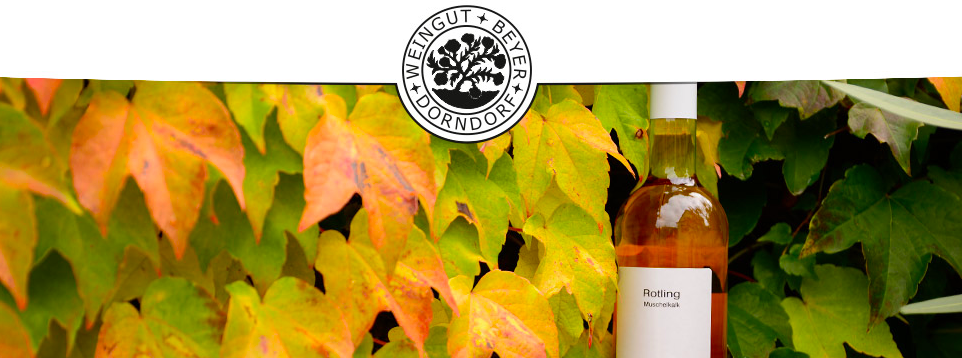2019 Scheurebe
Bottle size 0.750 l
Quality level German quality wine
Origin Saale-Unstrut (Germany)
Single layer Dorndorfer Rappental
Alcohol content 12% alc. Vol.
Residual sweetness 10.4 g / l
Acidity 5.6 g / l
Recommended drinking temperature of 12.0 to 14.0 ° C
Contains sulphites Yes
Expansion of stainless steel tank
Smell Apple and lychee aromas with a delicate note of nutmeg
Invigoratingly fresh taste with a sophisticated interplay of sweetness and acidity suitable for every occasion, especially with light cheese and salads
Storage 1 to 2 years
The Scheurebe makes almost as high demands on the location as the Riesling. It tolerates fairly dry, barren soils, gets along well with loess soils and with calcareous soils. Their wood matures for a long time, the long assimilation of the foliage enables high-grade grapes. The grape ripening is reached shortly before the Riesling, the acid degradation in the medium-sized berries begins relatively late. The variety is endangered by winter frosts as well as by botrytis and oidium infestation.
The breed found recognition in the 1950s when it was possible to produce Beerenauslese and Trockenbeerenauslese from the Scheurebe. Bred in Alzey in the Rhineland-Hesse region, it was mainly the winemakers in Germany's largest wine-growing region who planted the variety. It was booming in the 1970s, and the area under vines doubled. Of around 1,400 hectares of vineyards that are currently planted with Scheurebe, 740 hectares are in Rheinhessen, around 350 in the Palatinate and 105 in the Nahe. But winemakers in Baden and Franconia are also taking care of the aromatic variety with good results. With a share of 1.4 percent of the German vineyard area, Scheurebe is one of the most successful new German varieties.
2019 Rotling
Bottle size 0.750 l
Quality level German quality wine
Origin Saale-Unstrut (Germany)
Single layer Karsdorfer Hohe Gräte
Alcohol content 11% alc. Vol.
Residual sweetness 11.3 g / l
Acidity 5.3 g / l
Recommended drinking temperature of 10.0 to 12.0 ° C
Contains sulphites Yes
Expansion of stainless steel tank
Rotling made from 50% Portuguese Rosè and 50% Bacchus
aromatic-fruity smell with floral tones and gooseberry aromas
intense, fresh taste, a pleasant caramel tone remains on the palate
Recommended drinking temperature between 10.0 to 12.0 ° C, storage 1 to 2 years
